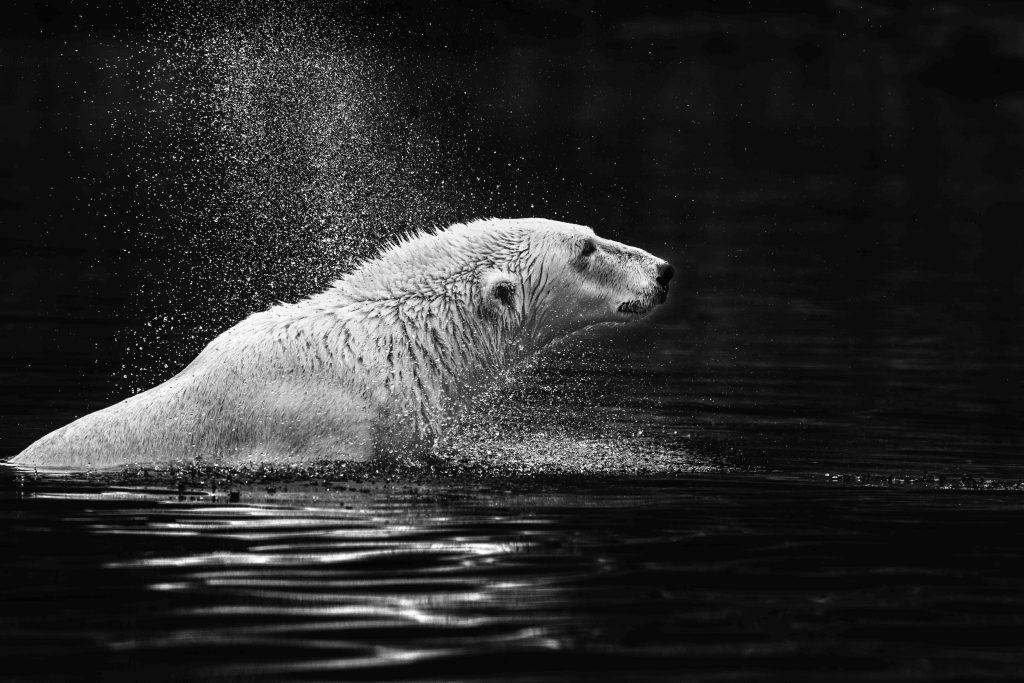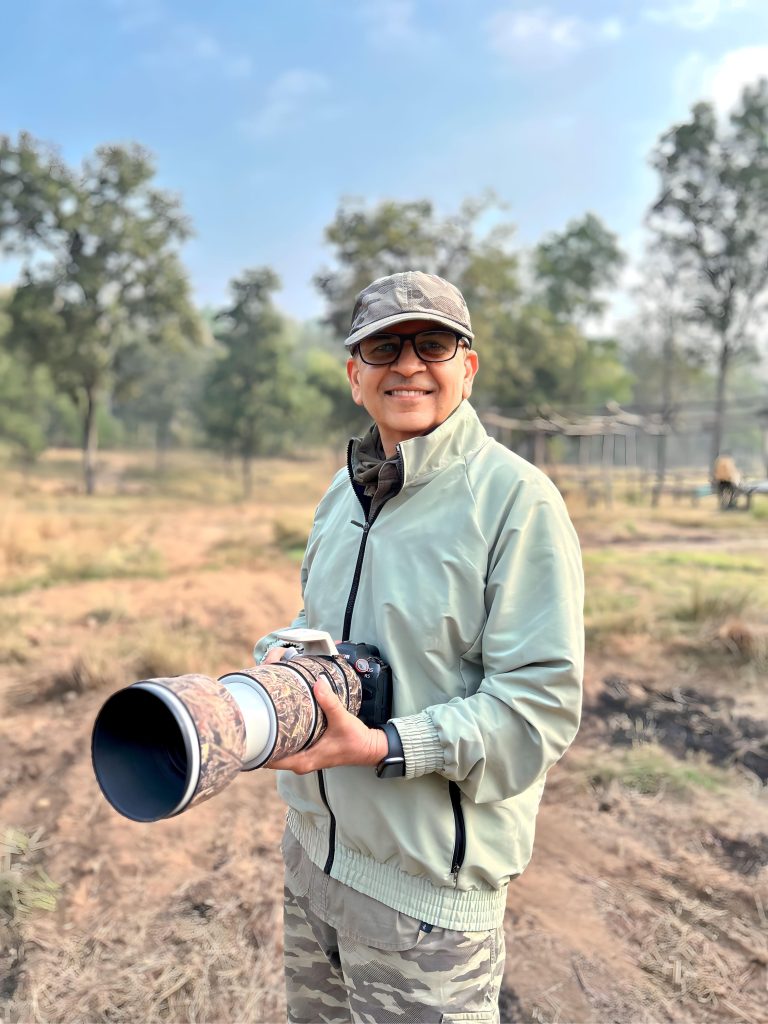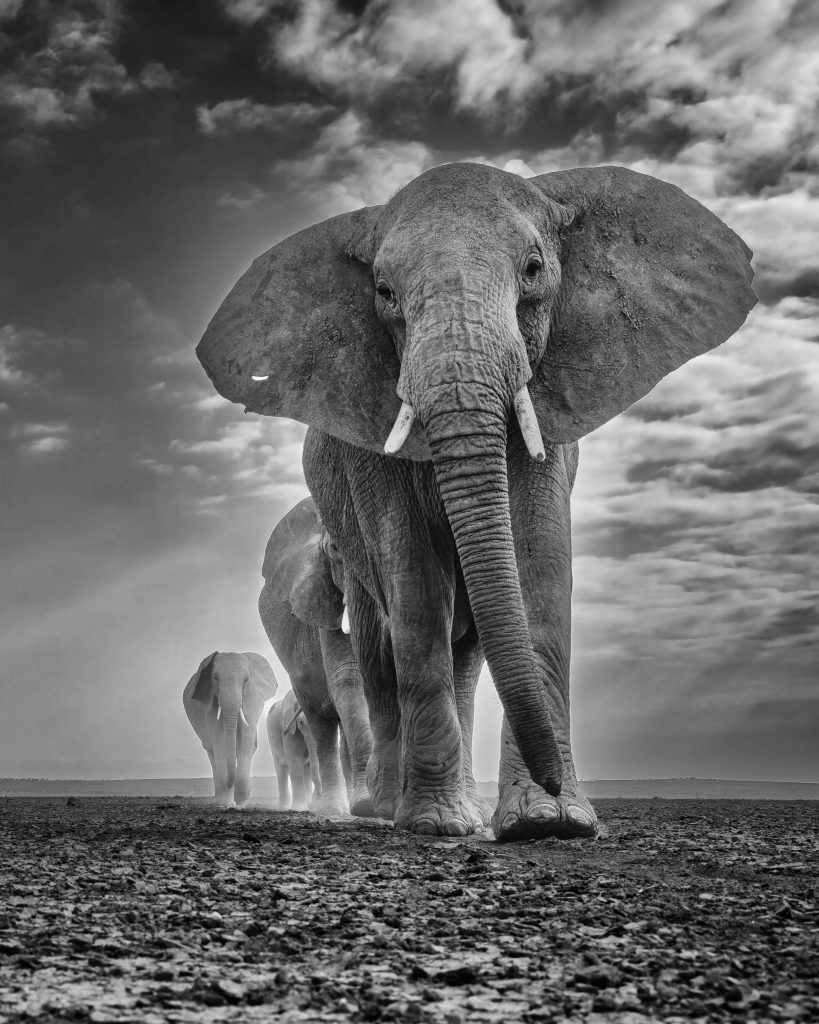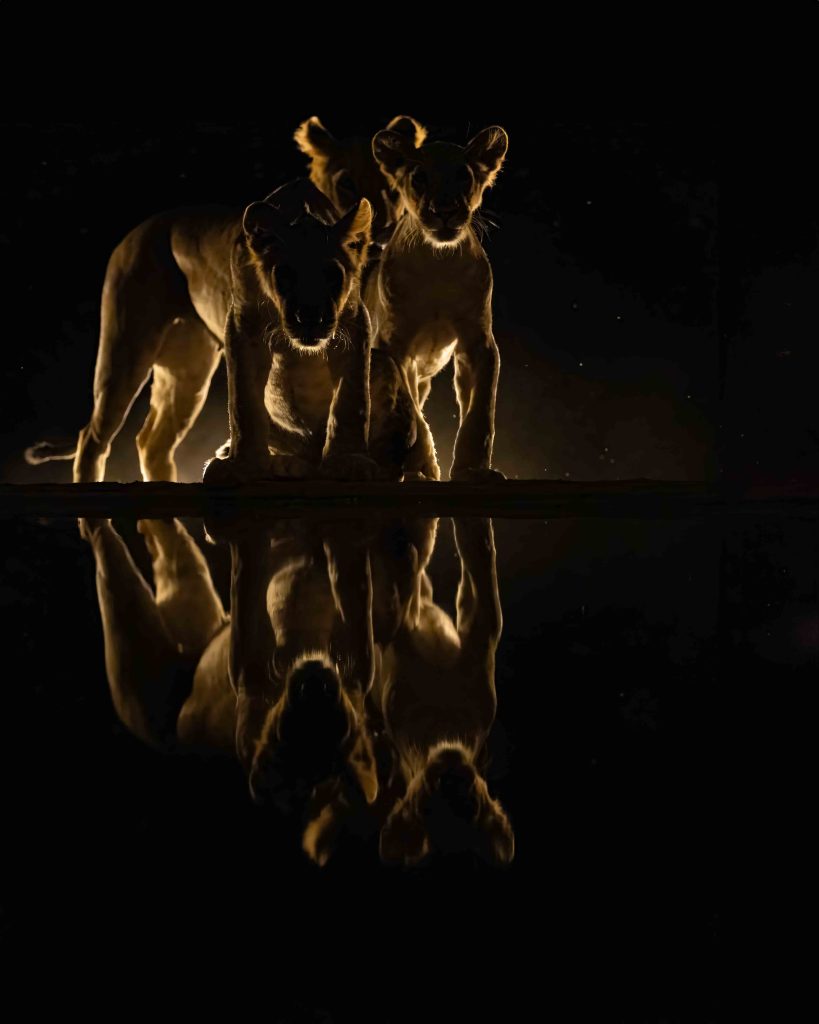(March 30, 2024) In 2023, wildlife photographer Parag Bhatt was named the winner of the People’s Vote Award in the wildlife category at the ReFocus Black & White Photo Contest for his image ‘The Gentle Giant of Ambroseli’, where he went up against entrants from 77 countries around the world. With numerous accolades to his name, and work featured in publications across the globe, the self-taught photographer’s journey began at home, listening to his mother’s stories of growing up in Mombasa and in his father’s darkroom, where he watched films being developed and enlarged. He talks to Global Indian about what inspires him to travel to the world’s most remote and challenging terrains to seek out some of the world’s most exotic, dangerous and elusive wildlife, as well as toeing the line between respecting an animal in its habitat and getting the perfect shot.

The photo of the polar bear in Svalbard that won Parag Bhatt an honourable mention in 2022
The formative years
Born, raised, and educated in Mumbai, Bhatt’s school days saw him keenly interested in science when he would make models and electrical toys from scratch. That interest saw him pursue electronic engineering. However, post his graduation, he moved to Powder Metallurgy where he worked on manufacturing diamond tools for the stone cutting industry. He worked in this industry for 40 years at the same time pursuing his hobby. “My father had a deep interest in photography. He had a darkroom at home where he would develop the film and enlarge prints. I used to love the way prints would come alive in a hypo solution in just a few minutes from white light falling on photo paper. So, I used to work with him in the darkroom and occasionally pick up his camera and shoot. That is how my interest was kindled in photography,” he reminisces.
Wild Ways
As far as his interest in wildlife was concerned, the contribution to this came from his mother who was born in Mombasa, Kenya since his grandfather had emigrated to Kenya. “She used to tell us stories of how she frequently encountered wildlife in Kenya when traveling from one place to the other by road or how the animals used to roam freely and were not confined to parks. Such stories brought in a lot of excitement within me as a young boy and ever since then, I wished to visit Kenya to view wildlife. Gladly this dream of mine came to fruition in 1994 when I first visited Kenya. My trip to Kenya plays an integral role in my journey as a wildlife photographer. It was on that trip that I for the very first time in my journey as a wildlife photographer shot wildlife,” he explains.

Wildlife photographer Parag Bhatt
Lessons in the Wild
Wildlife behaviour is quite unpredictable, making it challenging to anticipate their actions and movements. Capturing the perfect shot often requires waiting for the right moment, sometimes for hours or even days. “Hence patience and persistence are mandatory qualities for a wildlife photographer. Moreover, many times the weather is not conducive, which can impact the quality of shots. In times like these, the photographer can either wait for the weather to change and become favourable for capturing shots or use the weather to his/her advantage,” he says.
Wildlife photography involves using specialized gear, such as long lenses and sturdy tripods, which can be heavy and cumbersome to carry around. Mastering technical skills like exposure, focus techniques and composition principles are essential for capturing compelling wildlife images. “In wildlife photography, there is something very interesting called a ‘circle of fear’, which if crossed, will result in the animal fleeing.” It’s a fine line, he admits, between respecting the animal’s space and natural habitat while still getting close enough for a good shot. But, he maintains, the well-being of animals is always top priority and disturbing them for the perfect shot is just not done. “Documenting wildlife can also raise awareness about conservation issues, but photographers must be mindful of their impact on fragile ecosystems and endangered species,” he adds.
Being Recognised
Bhatt won two honourable mentions and the People’s Choice Award in 2022 in the ReFocus B&W photo competition, something that has given him satisfaction and happiness. “I remember capturing the polar bear photograph less than two years ago in Svalbard. The whole idea behind capturing this shot was to portray the behaviour of the polar bear.” The polar bear, he says, was dipping into the icy water to search for her kill, which had been carried adrift from the shore by the tide. For Bhatt, the challenge was to locate her everytime she surfaced, as she would dive in somewhere and resurface randomly elsewhere after about half a minute. The long and heavy lens, the choppy waters and the bobbing rubber boat only made the task more challenging.

Photographer by Parag Bhatt
Working on Himself
As self-taught wildlife photographer Parag Bhatt commenced his journey in wildlife photography during the days of the film by taking snapshots of animals in their habitat. For the first few years, he pursued this path and started documenting each exposure, trying to improve the next time. “Over the years, I realized that there was much more to it than what I had been doing. Hence, I started my quest to improve my skills. For this, I collected a lot of books on the art and science of photography and slowly learned the ropes of exposure, metering, focus techniques, and mainly the art of composing images,” he says.
In 2003, Bhatt bought his first digital camera which revolutionised the learning process. It shortened the learning curve for photographers everywhere, and Bhatt also began observing and learning from some of the best in the business. Seeing their work inspired him to strive for better photographs. “My journey has been slow and painstaking but I have reached a stage where I have the confidence to exhibit my work at the prestigious Jehangir Art Gallery in Mumbai,” he adds.
Conflict Cues
For a wildlife photographer documenting human wildlife conflict is an interesting yet challenging task. Balance plays a vital role in showcasing the human and the wild stories. “While documenting the human wildlife conflict I ensure I am capturing the beauty of the wildlife showcasing them as at ease in their natural habitat while coexisting with the human. I also try to show the complex relationship between humans and the wild through my photographs. For instance, I captured one such photograph in Masai Mara Kenya. The photograph portrays how the usage of plastic negatively impacts our ecosystem. The photograph showcased a lion cub chewing a plastic bottle while sitting beside its mother. Plastics pose a significant threat to the health and survival of wildlife globally and the photograph tried to get attention to the harmful effects plastic can have on animals. I wanted to convey the message that we should have effective waste management techniques to avoid such incidents and reduce the harmful effects of plastic pollution,” he says.

Looking Ahead
Over the years he has learnt several lessons while pursuing his craft of capturing the wild. Patience, persistence and acceptance in nature are key because no matter how well-prepared one might be, nothing goes according to plan in the wild. “Things unfold in their own way,” he says. “I have learned to embrace every moment in the wild as it comes. I enjoy being by nature and observing the animals in their natural habitat and there are a plethora of things I have learned while capturing each shot.” Over the years, he has learned to understand animal behaviour better, and to approach every encounter with an open mind. “I accept nature’s unpredictability efficiently and always remain patient in the moment,” he says. For someone who always tries to push boundaries to capture amazing shots, he plans to publish a coffee table book soon. “I will also set strategies to mentor budding wildlife photographers by hand holding them and teaching them the techniques of shooting good wildlife images. I will be going to Kenya at the end of this month to shoot wildlife at night and rhinos up close and hopefully come up with some striking images,” he signs off.
Follow Parag Bhatt on Instagram and on his website





Magnificent he is 🙌